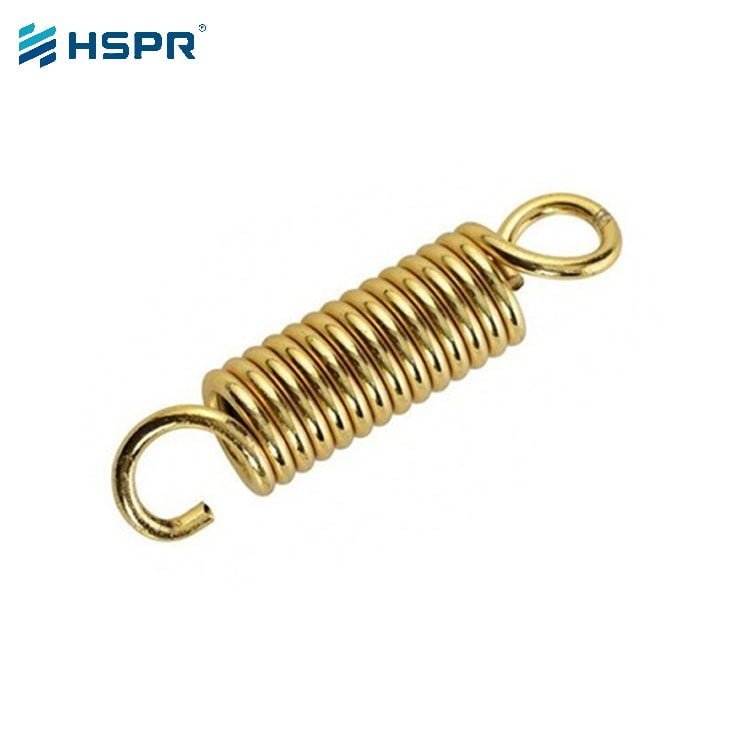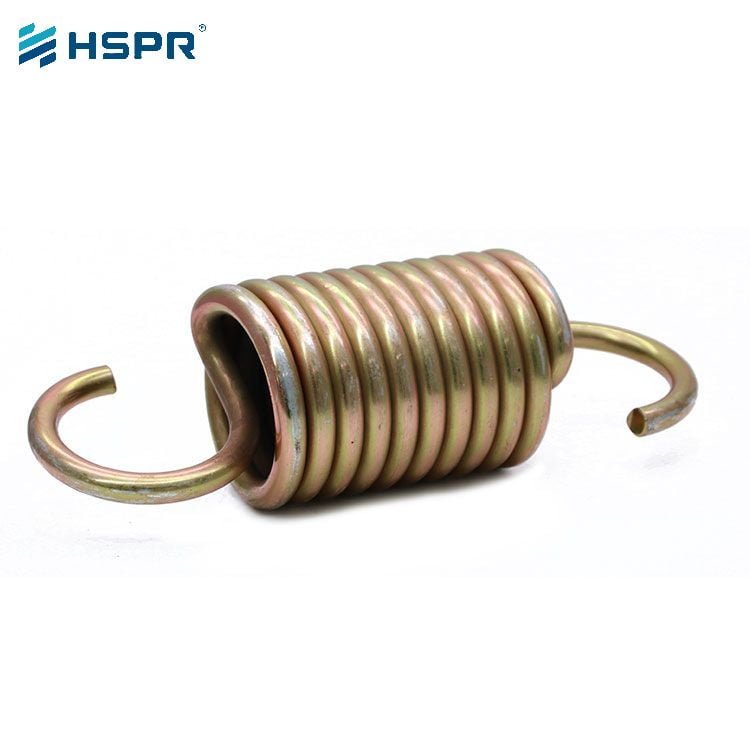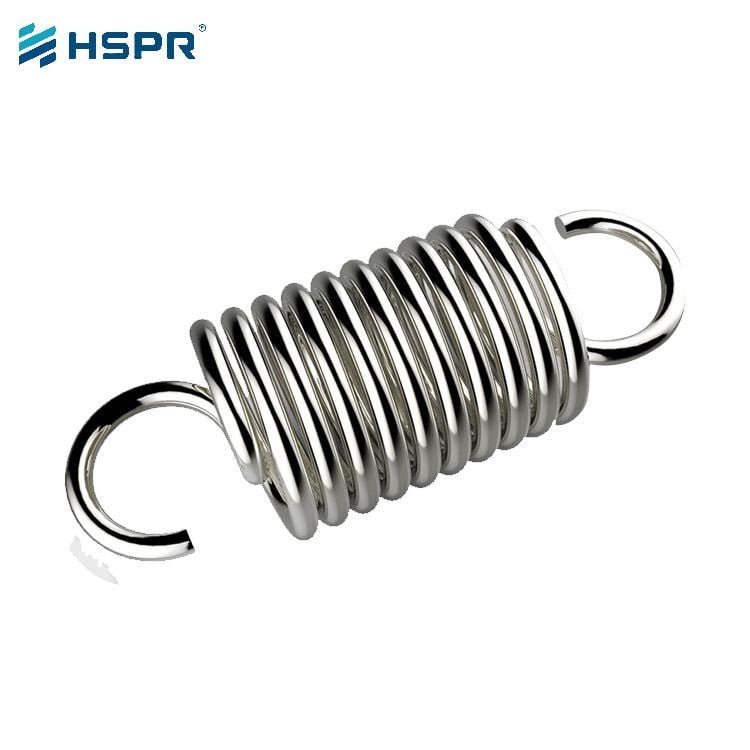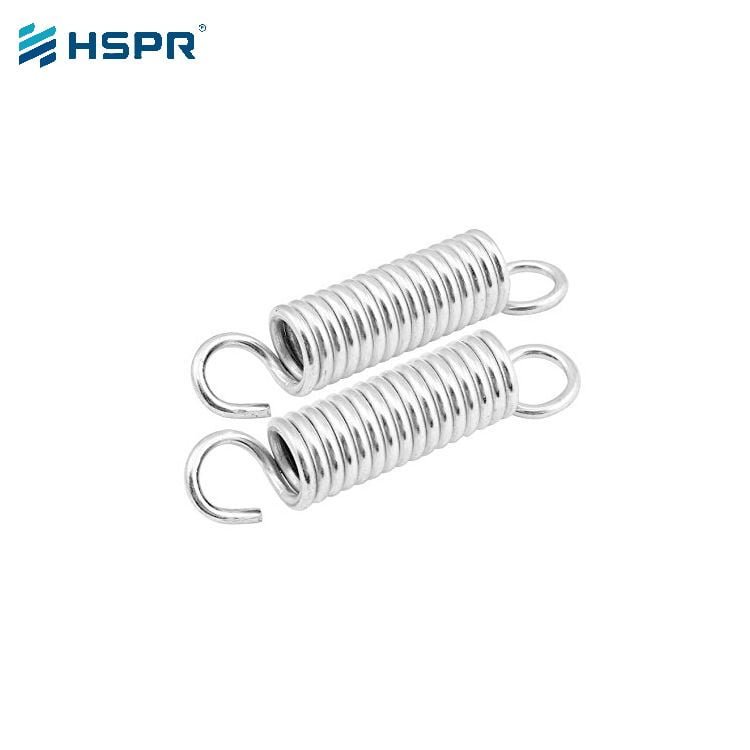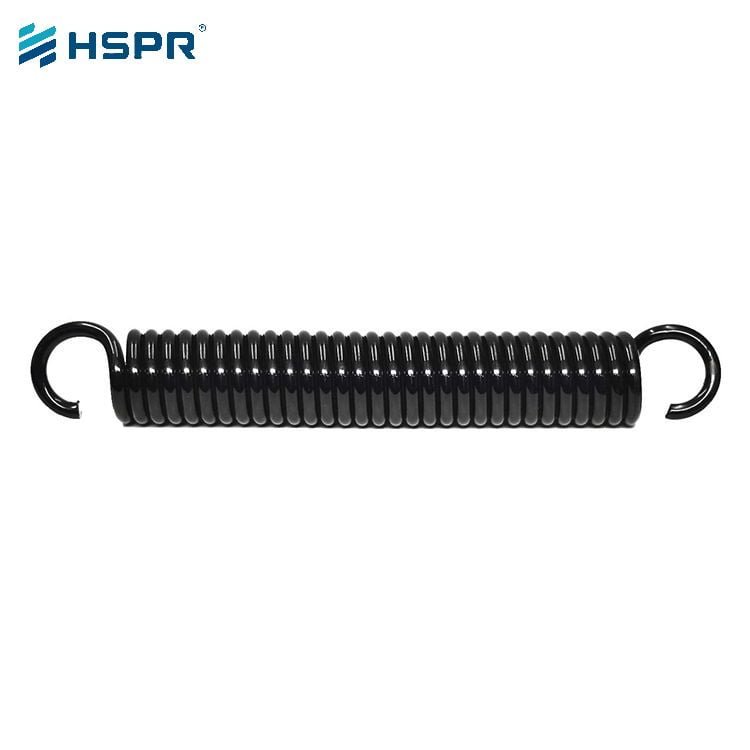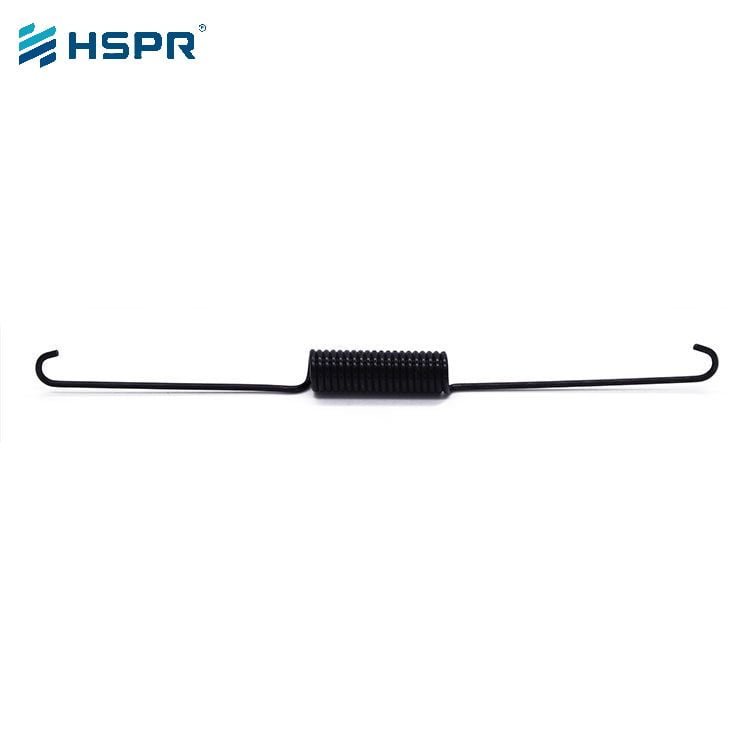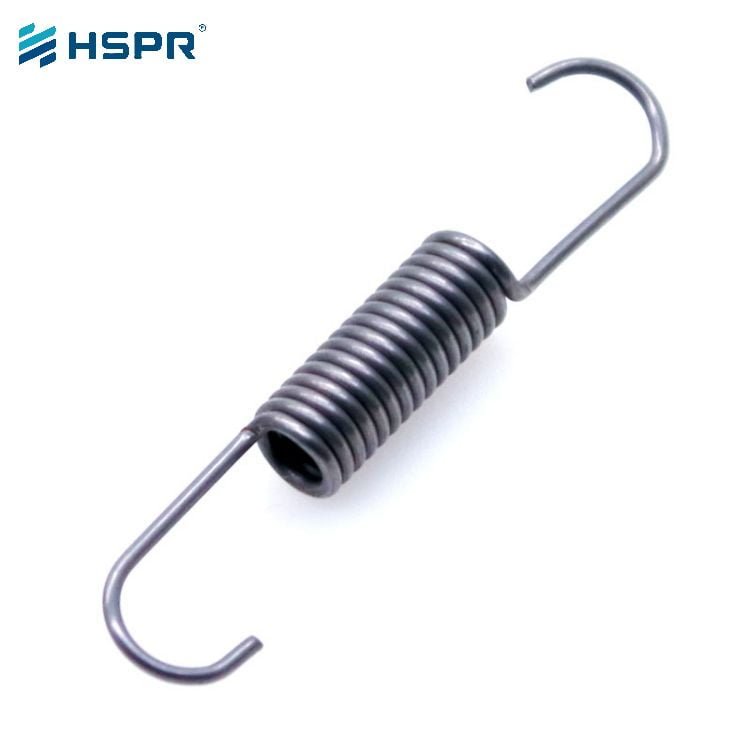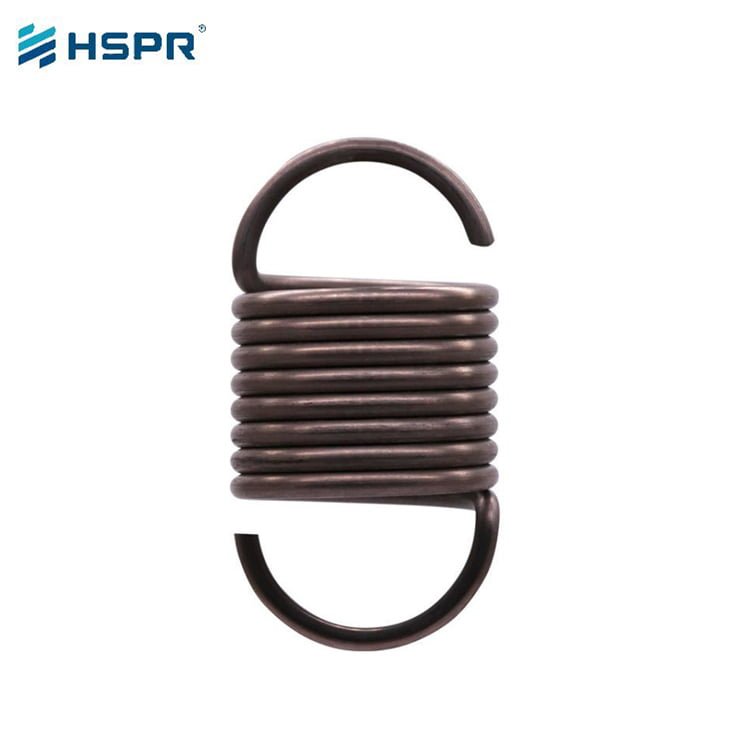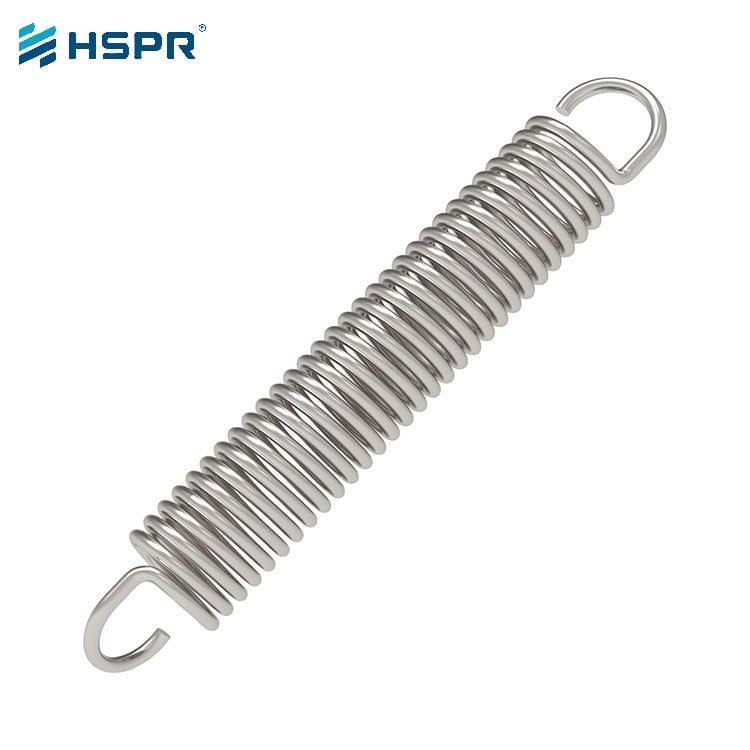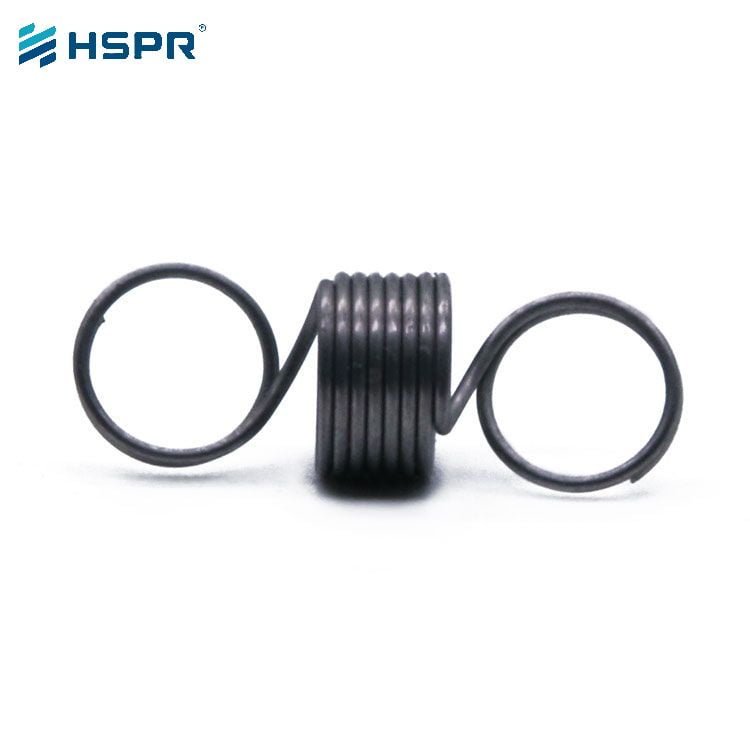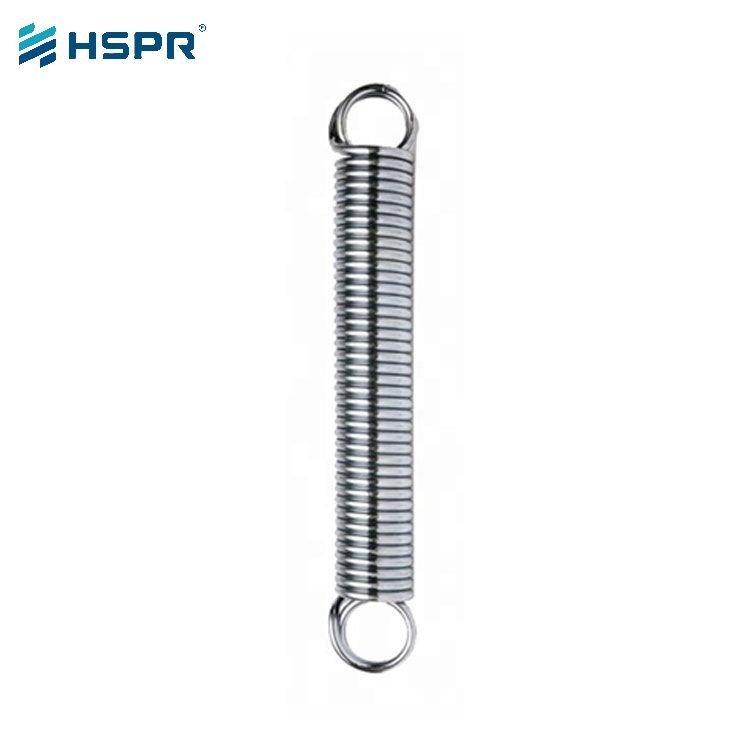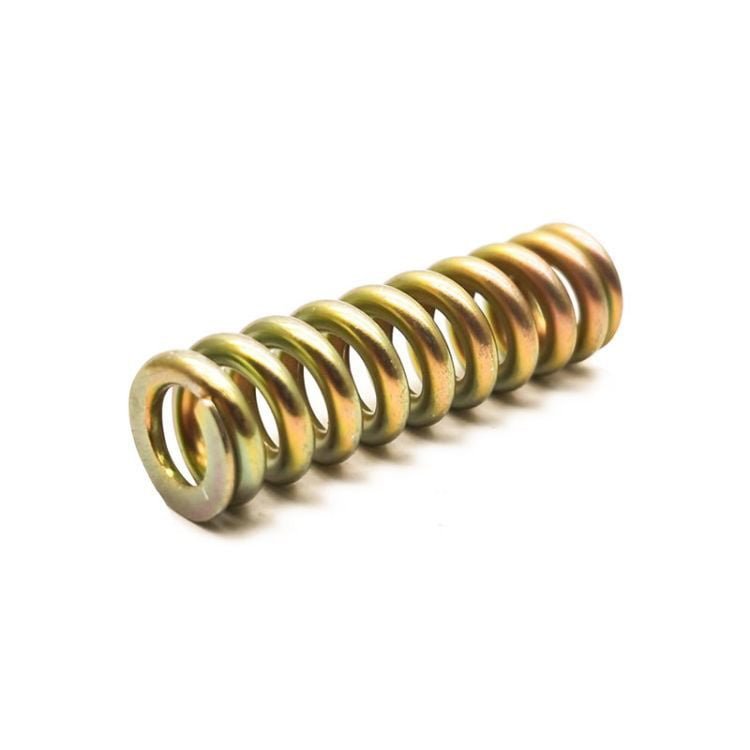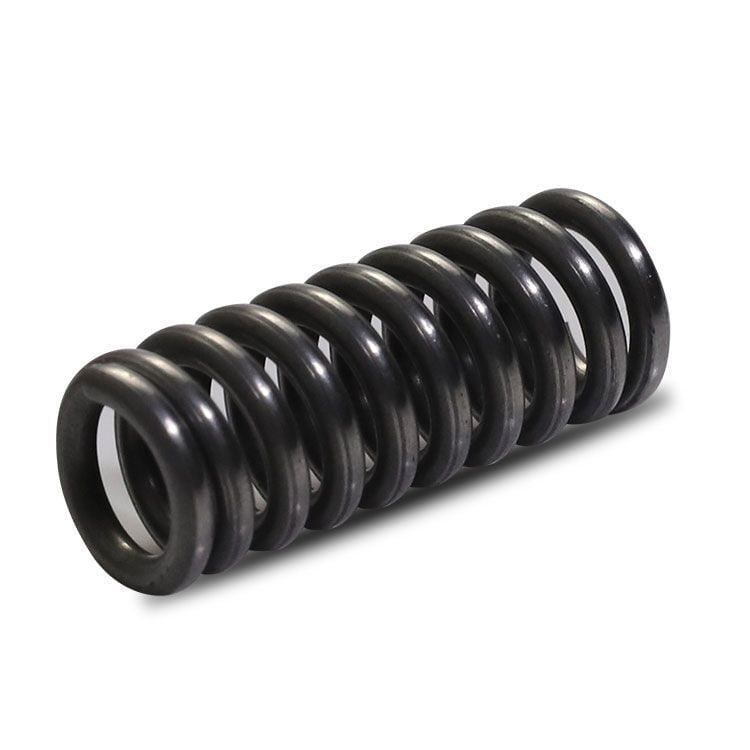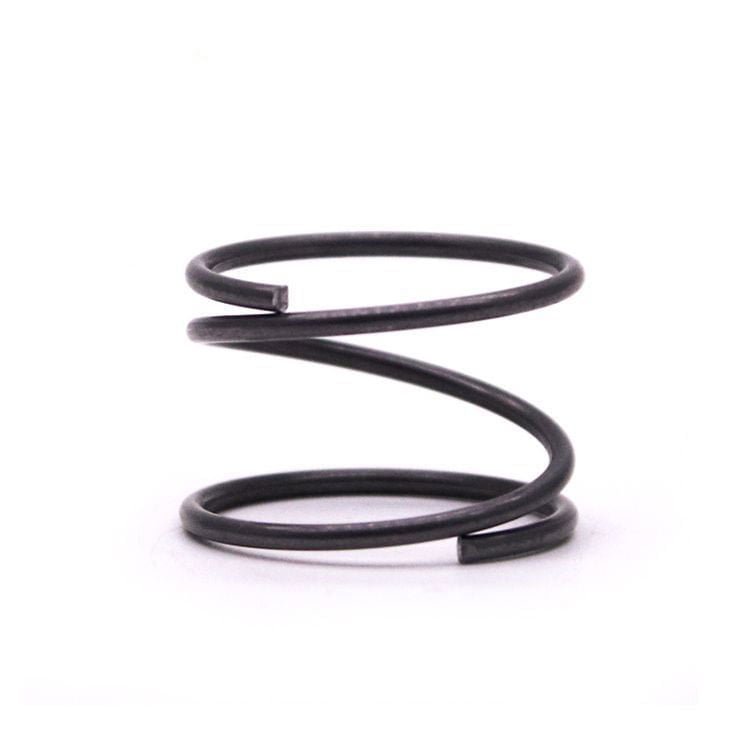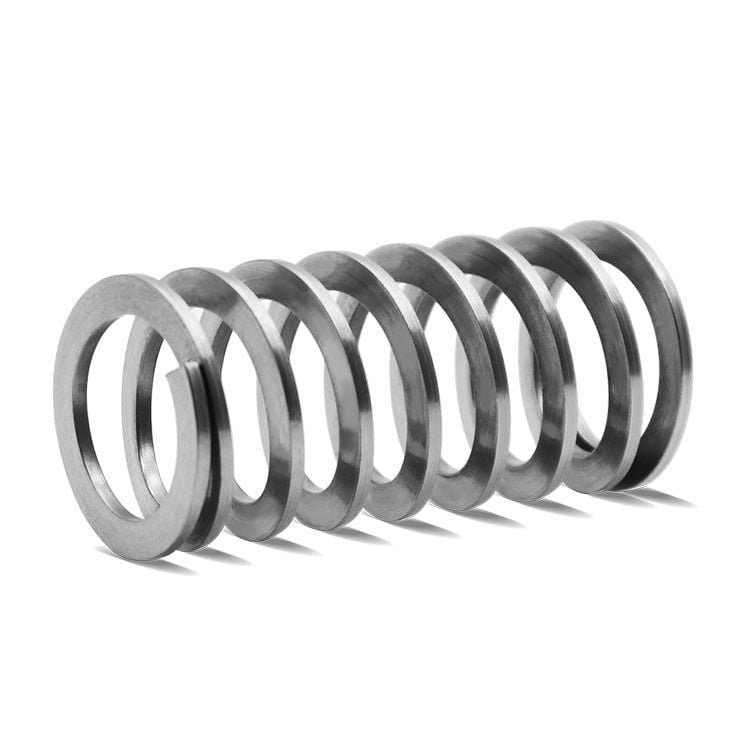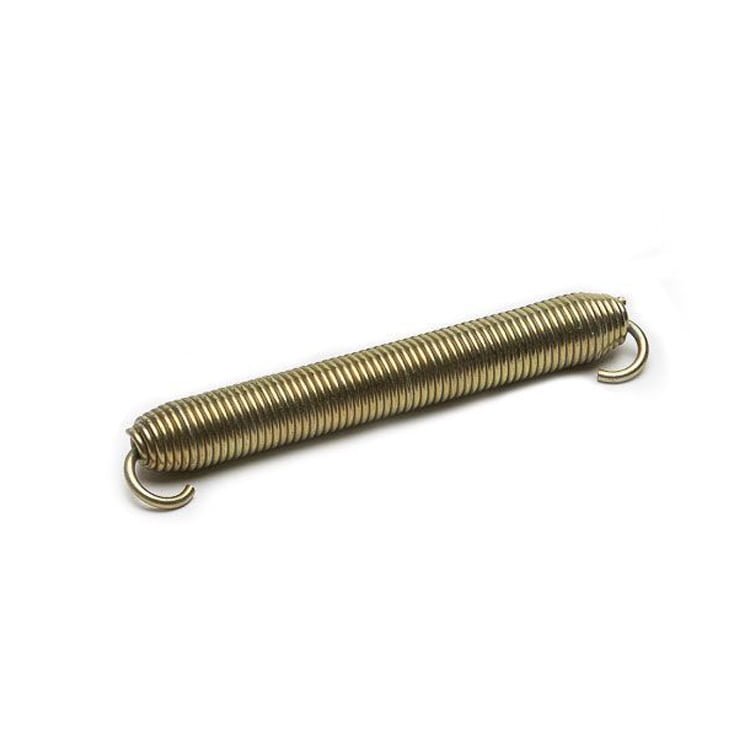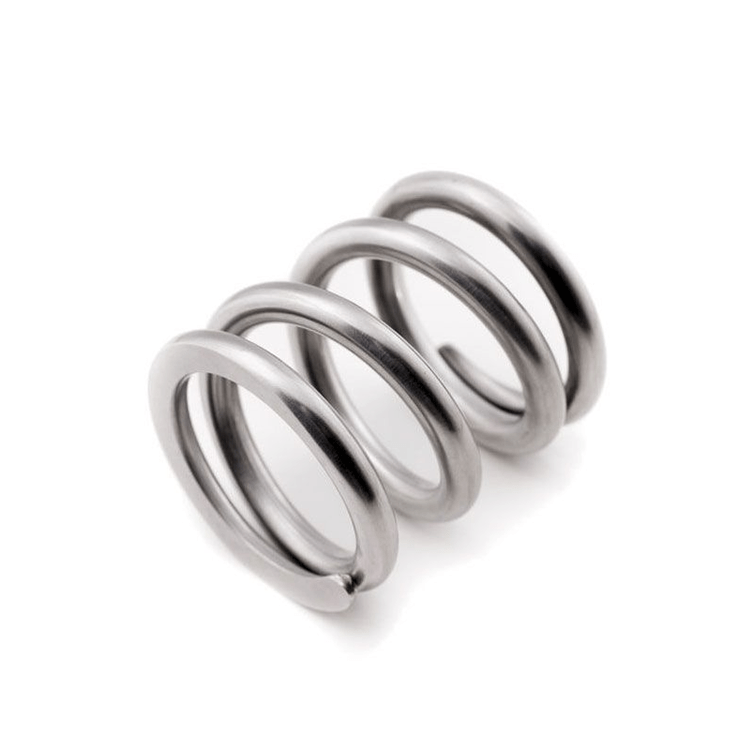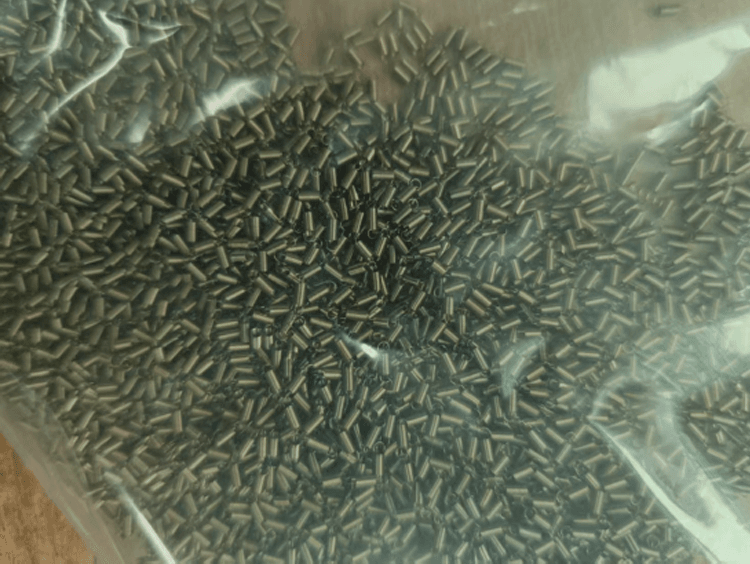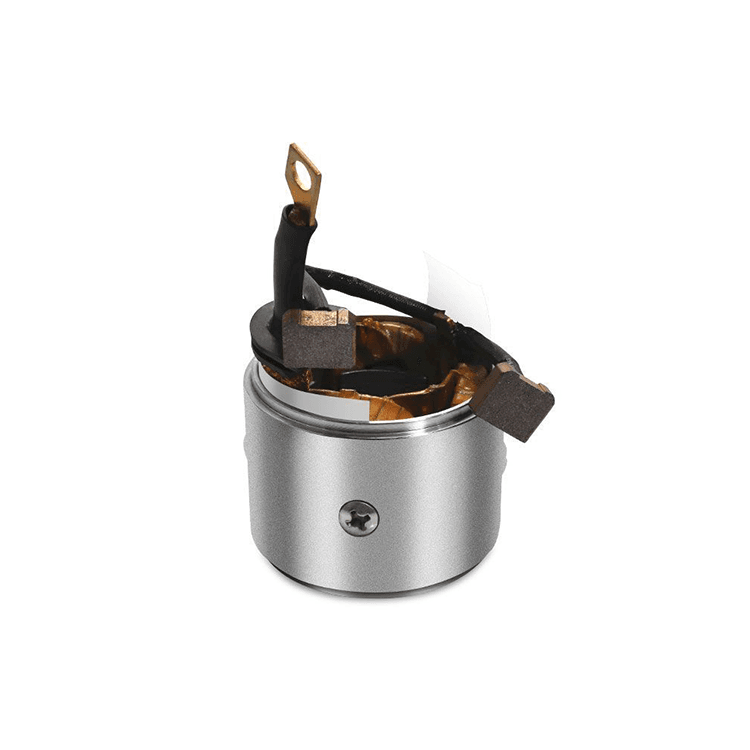Compression spring with hook
The compression spring with hook is called an expansion spring, also called an extension spring. A compression spring with hook it’s not actually a compression spring, it’s a stretch spring. The coils of a stretching spring have little to no pitch between them, and their function is the opposite of a compression spring, which is used to compress, and a stretching spring which is used to stretch.
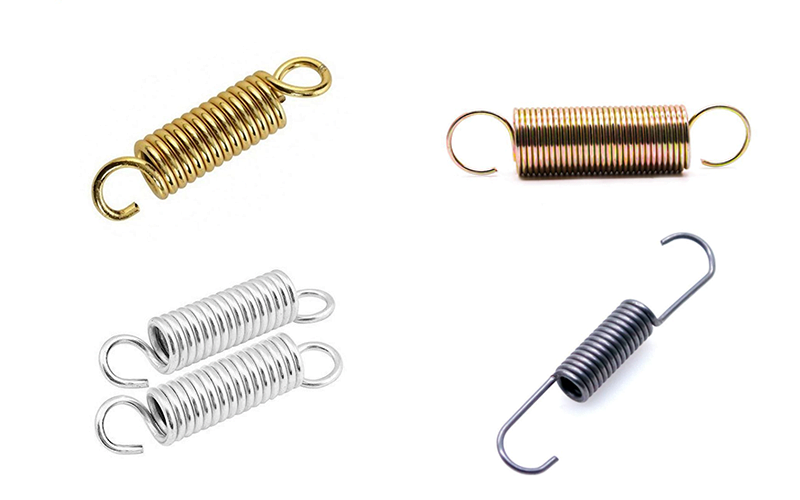
Compression spring with hook is a steel wire spring with hooks at both ends, and there is a certain tension between its coils to keep them together, allowing it to store more energy when it is pulled apart.
The load applied to the extended spring pulls its tightly wound coil apart and opens it up. The tension spring resists the tension applied to them, and when the tension is removed, it creates a slingshot effect that returns the spring to its original shape. This functionality makes them ideal for lifting objects and assisting in lifting or dispersing certain loads. The length, thickness, shape and hook type of Compression spring with hook can be customized, because the two ends of the spring have hooks, so it is very convenient to stretch, the more common hook types are machine hooks and cross hooks.
What is a compression spring with hook?
The compression spring with hook is the weaker part of the whole, so when the weight pulls the spring apart, the hook will bend. compression spring with hook are used in a wide range of applications, including: upholstery, automotive parts, trampolines, pliers, and other tools and machinery parts. So no matter what kind of spring you need, we can customize it.
The difference between compression spring and tension spring:
A compression spring is a type of spring designed to withstand compression forces. They usually take a spiral shape with equally spaced coils that can be compressed to reduce their length. Common applications of compression springs include machinery, automotive suspension systems, furniture and other scenarios that require stress. When pressure is applied, the coil of the compression spring will gradually move closer, causing the spring to compress. Its elastic potential energy is stored in its compressed coil for release when needed.
A stretch spring is a spring designed to withstand tension, usually in a straight shape, with hooks or rings at both ends for connection to other components. Tensile springs have a wide range of applications, often found in Windows, doors, cranes and other scenes that require tension. When a tension is applied, the coils that stretch the spring gradually separate, causing the spring to stretch. Its elastic potential energy is stored in its elongated coil for release when needed.
Type of compression spring with hook:
1.Extended spring hook type:
The end of the tension spring or extension spring forms a hook, ring or radius.Extension springs have hooks because their function is to pull the coil apart. These hooks will be attached to certain parts that will participate in the cycle of tensing the spring and returning it to its free, preloaded or unloaded state.
2.Machine hook:
Machine hooks are one of the more commonly used hooks, these hooks are widely used and are stronger than cross-center hooks because the radius of the bend makes the hook less obvious, and they are made by bending three-quarters of the coil.
3.Intersect center hooks:
This is the second more commonly used hook, and the complete radius required to make this hook is more obvious. This type of hook is made by unwinding the last coil and twisting the coil toward the middle and thus through the center.
4.Side hooks:
When the spring body cannot interfere with the mechanical parts, side hooks are needed. This is because the hook is on one side of the spring and therefore the other side of the spring is offset. They are made by simply bending the last coil out, so they are more economical than crossing center hooks.
5.Expansion hook:
The function or purpose of the extension hook is very similar to that of the side hook. When you need a long inside hook, and a short body length, then your spring gets more force through fewer coils. This is the most expensive type of hook.

